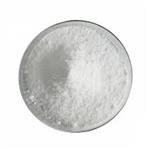N,N-Dimethylacetamide: Preparation, Introduction, and uses
Apr 19,2024
Introduction
N, N-Dimethylacetamide is a colorless, water-miscible solvent used to synthesize vinyl resins, styrenes, and linear polyesters. Jaundice has been seen in people repeatedly exposed to small amounts of the solvent. Fatty infiltration in rats and focal necrosis in dogs have been observed after high-dose experimental exposure.
The organic, organometallic, and bioorganic transformations are extensively carried out in N, N-dimethylformamide (DMF) or N, N-dimethylacetamide (DMAc). These two polar solvents are used for their dissolution properties and as multipurpose reagents. They participate in several processes and serve as a source of various building blocks, giving one or more of their own atoms.

Preparation
N, N-Dimethylacetamide is prepared by the reaction of dimethylamine with acetic acid, acetic anhydride, or acetate esters. Heating dimethylamine acetate with or without a catalyst affords N, N-Dimethylacetamide. The reaction of dimethylamine with acetate esters requires a catalyst; sodium methoxide is typically used.
Uses
DMAc is used as a solvent for producing fibers and synthesizing organic compounds, notably pharmaceuticals. Its broad range of miscibility makes it useful in mixed solvents. It is also stable to strong bases but hydrolyzes in the presence of acids. As the hazard information table shows, it must be handled with care.
Toxicity
Multiple case reports have documented DMAC-associated hepatotoxicity, mainly in synthetic fiber workers. Acute DMAC poisoning is primarily manifested as a neuropsychiatric illness, including psychosis, delirium, and seizures, and as a systemic disease, including acute hepatitis. The primary route of exposure appears to be dermal absorption of DMAC vapor. Subclinical ALT elevations appear not infrequently in new synthetic fiber workers (within the first 7 months of employment) in a dose-dependent fashion. The elevation in ALT improved by 50% within 30 days in 90% of persons after DMAC exposure was halted. Interestingly, transaminitis appears to occur much less frequently, if at all, in workers exposed longer than 7 months, thus suggesting adaptation to chronic exposure. However, animal models have documented liver injury following both acute and chronic DMF exposure.
References
[1] Jean Le Bras, Jacques Muzart. “Recent Uses of N,N-Dimethylformamide and N,N-Dimethylacetamide as Reagents.” Molecules 23 8 (2018).
[2] Schiano, T. and Kristel H. Hunt. “Chapter 28 – Occupational and Environmental Hepatotoxicity.”Drug-Induced Liver Disease (Third Edition) 2013: 659-675.
- Related articles
- Related Qustion
- N,N-Dimethylacetamide: Uses, Preparation and Toxicities May 17, 2023
N,N-Dimethylacetamide (DMA) is a multipurpose reagent which delivers its own H, C, N and O atoms for the synthesis of a variety of compounds under a number of different experimental conditions.
- What is N,N-Dimethylacetamide? Jul 24, 2020
N,N-Dimethylacetamide is a highly polar aprotic solvent, micro ammonia odor, very strong dissolving power, soluble wide, miscible with water, aromatics, esters, ketones etc.
CoCl2-6H2O can be used as reaction catalyst, paint drying agent, ammonia absorber, neutral dyes, desiccant, ceramic colouring agent, feed additives and so on.....
Apr 19,2024APIOxalyl chloride has found general application for the preparation of carboxylic acid chlorides since the reagent was introduced by Adams and Ulich.....
Apr 19,2024APIN,N-Dimethylacetamide
127-19-5You may like
- The toxicity of Triethylene glycol
May 14, 2024
- Is 1,4-benzoquinone a toxicity compound?
May 11, 2024
- The Synthesis method and Toxicity of 18-Crown-6
May 10, 2024
N,N-Dimethylacetamide manufacturers
- Dimethylacetamide (DMAC/DMA)
-

- $18.00 / 1KG
- 2024-05-24
- CAS:127-19-5
- Min. Order: 1KG
- Purity: 99.99%
- Supply Ability: 20 tons
- dimethylacetamide
-

- $100.00 / 1kg
- 2024-05-24
- CAS:127-19-5
- Min. Order: 1kg
- Purity: 99%
- Supply Ability: 500mt/month
- N,N-Dimethylacetamide
-

- $30.00 / 1g
- 2024-05-24
- CAS:127-19-5
- Min. Order: 1g
- Purity: 98%
- Supply Ability: 2000kg




